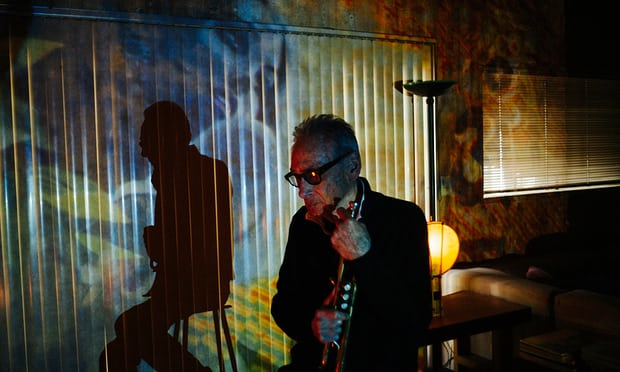In the late 70s, long before terms such as “world music” or “cultural appropriation” were in common usage, the trumpeter and composer Jon Hassell devised the term “Fourth World” to describe his music. It explored what he called “primitive futurism”, where shantytown squalor coexisted with hi-tech western studio technology, fusing Hassell’s early minimalist work with Terry Riley and La Monte Young with his studies of Indian, African and Indonesian music.
Brian Eno was an early adopter of Hassell’s aesthetic and, before long, other champions of pan-cultural fusion – David Byrne, Peter Gabriel, David Sylvian, Ry Cooder – were collaborating with Hassell and employing his methodology. As dozens more musicians started plundering exotic global sounds and placing them through electronic filters, Hassell was off exploring other worlds – adding his distinctive trumpet sound for artists as diverse as Björk, Tears for Fears, kd lang and 808 State; flirting with hip-hop and electro; creating “coffee-coloured” classical music with the Senegalese drummer Abdou Mboup; exploring ambient jazz with the likes of Naná Vasconcelos, Jacky Terrasson and Anouar Brahem.
Astonishingly, Hassell is now 81 and making the most forward-looking and experimental music of his career. His new album, Listening to Pictures (out on 9 June), is his first in nine years. Instead of using a live band, like his last album for the ECM label, this is a much more studio-bound project, using mutilated samples and distorted layers of voicings, reminiscent of his 1980 Possible Musics LP, with Eno.
Hassell’s trumpet still plays a key role, even if it is often buried deep in the mix. On Manga Scene, he sounds like Miles Davis playing over a clanking, sonically mutilated smooth jazz session. On Al Kongo Udu, it resembles a bamboo flute, blowing gently as manipulated samples of African drums ricochet around the mix. On Dreaming, Hassell plays through a harmoniser to create an eerie choir of horns over a riot of quivering percussion and throbbing synths. It seems just one spoon-fed breakbeat from turning into a rave anthem, and is one of the many moments here where Hassell’s electronic soundscapes recall the work of Oneohtrix Point Never, Boards of Canada or Aphex Twin.
























